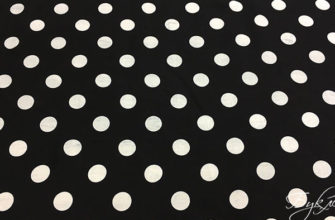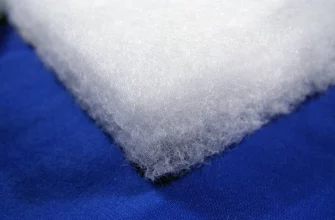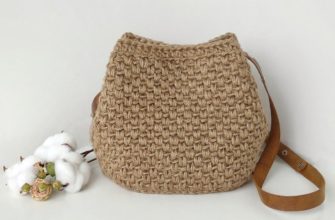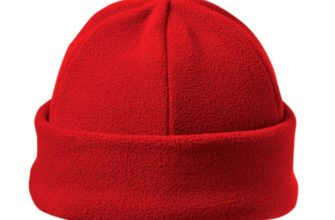The main purpose of camouflage uniforms is to create greater opportunities and techniques for concealment against the background of the terrain surrounding the object. Initially, camouflage clothing was a uniform used by fishermen. But now caps, jackets, sweaters and trousers for everyday wear are often sewn from camouflage material.

- A variety of fabrics for the production of summer camouflage suits
- Oxford
- Rip-stop
- Greta fabric
- Fleece
- Shirting fabric
- Membrane
- Tarpaulin
- Avizent
- Basics of constructing camouflage painting
- Camouflage in Russia and the Soviet Union
- Modern camouflage of Eastern Europe
- Military camouflage of other countries
- Modern pixel camouflage
A variety of fabrics for the production of summer camouflage suits
The following types of fabric are often used for summer camouflage clothing:
Oxford
A classic synthetic fabric that consists of nylon and polyester. It has a square weave, when the threads are woven together in the form of squares. The main advantages of the fabric are durability, strength and water resistance, as well as resistance to chemical compounds. The material retains heat well and does not let in cold air.
For your information! The fabric depends on the thickness of the threads and is divided into types from 210D to 600D. It is used to sew clothes, shoes and military backpacks.
When washing, it is advisable to monitor the water, the temperature of which should not be higher than 50°C. It is better to choose special cleaning agents for synthetic fabrics. When washing in a machine, you should set the delicate mode, it is better to refuse spinning. You can dry things by hanging them on hangers. Then they do not need ironing.
Rip-stop
The fabric contains polyester reinforced thread and cotton particles. The lattice weave makes the fabric resistant to mechanical defects, i.e. it will not unravel at the edges. This fabric almost does not wrinkle and does not shrink with each wash. It is wear-resistant and durable. It is advisable to wash at a temperature of about 40°C in the hand wash mode. It can also be dried on hangers, no ironing required.
Greta fabric
The composition includes polyester and cotton. Due to the special type of weaving, the cotton thread is located on the inside of the material, and the synthetic thread is on the outside. Greta has high wear resistance, retains heat well, and absorbs moisture well. It is advisable to wash at a temperature not exceeding 60 ° C. If this figure is higher, the item will instantly lose its properties. The ideal mode is hand washing. Spinning should not be higher than 600 rpm. Drying should be in an upright position, and ironing only from the inside.
Fleece
This camouflage fabric is made from polar fleece fiber, which is 100% polyester. The fabric is created in such a way that air chambers are formed in its structure. This fabric is hypoallergenic, lasts a long time, is pleasant to the touch, and does not shrink when washed. Wash only in synthetic mode, spin up to 600 rpm. Dry in a vertical position. The material does not wrinkle, so there is no need to iron it.
Shirting fabric
This is a mixed type of fabric made from polyester and viscose. It washes well, is soft to the touch and does not cause allergies on the skin. Caps and bandanas are also made from this fabric. You can wash it in warm water no higher than 70°C. Preferably in the synthetics or cotton mode. When spinning, set no more than 1000 rpm. Ironing should be done in the same modes as washing.
Membrane
The membrane fabric does not restrict movement, protects well from rain, drafts and frost. Moisture from the body will come out, due to which the first layer of fabric will be dry. It should be washed carefully at a temperature of no more than 40 ° C. It is better to rinse two or three times, and do not spin. Dry horizontally, away from heating devices.
Tarpaulin
A fairly dense and coarse material that is made from thick yarn. It consists of jute and cotton threads. The main characteristics of this fabric are strength, resistance to mechanical damage (cuts and tears). The fabric is wear-resistant and does not let moisture through. It is quite difficult to wash, since the material becomes heavy and coarse from water, which can also disrupt its impregnation.
Please note! It is better to wash by hand with soap and a brush, dry horizontally.
Avizent
Also called aviation tarpaulin. This is a heavy material that is used to produce awnings, high-strength equipment. It has high resistance to mechanical damage and tears. Fabric care is exactly the same as for tarpaulin.

Basics of constructing camouflage painting
Camouflage color is used to make the object it is applied to invisible. To achieve this goal, the coloring has two purposes:
- deforming - violation of the integrity of perception of the visible;
- imitation - ensures the inseparability of the object from the general background.
The deforming purpose is carried out in modern suits mainly by breaking up the object's figure into several contrasting colored parts. And the imitation is realized by using a color scheme similar to that characteristic of the place where the suit will be used, by simulating natural objects (trees, bushes, water, mountains, etc.).
Camouflage in Russia and the Soviet Union
The digital camouflage of the Russian army is now called "digital flora". Abroad, this suit is known as Russian Pattern, and in the Russian army it is called "Pixel". This suit was created in 2007, and the military was supplied with it only a year after the decision was made to replace "Flora".
Over the many years since the Soviet era, the following types of camouflage have been created:
- "Ameba". Created in 1935. Produced in three types;
- "Deciduous Forest" was created in 1942;
- "Palm". The camouflage pattern was created in 1944. Each season had its own suit;
- "Silver Leaf" was created in 1957. The army suit also had the name "Beryozka", or KGB camouflage. It can be white or yellow;
- "Butan" or "Dubok". It was created in 1984;
- Russian camouflage issued in 1993;
- "Undergrowth" camouflage is the first dual-frequency suit. It has good camouflage, but is very easily damaged;
- Digital Russian camouflage worn in the army now;
- Yellow camouflage "Flora" is mainly used by the troops of the North Caucasus Federal District in the summer, when the grass is burnt out.
Please note! Many of these types of camouflage are not mandatory to wear. They have also found private use in security agencies.
Special Russian organizations also produce camouflage gear that was developed in the West. In addition, Russia is constantly improving the functions of the suits that are currently available, and creating new types of camouflage equipped with even better characteristics.
Modern camouflage of Eastern Europe
Modern camouflage is divided into five categories:
- forest (used in Russia, Europe, northern USA);
- sand camouflage (used in northern Africa, parts of Asia, the Middle East, in sandy areas where desert winds prevail);
- for jungles (southern USA, southern Asia, and Syrian areas);
- winter (mainly used in arctic climates);
- "Bush" (designed with characteristics for southern Africa, this category includes several types of suits).
Simply put, any camouflage texture that exists today falls into one of five groups.
Important! There are also additional categories "City" and "Miscellaneous". City is intended for use in urban environments, and the second is for describing suits that work on a different principle than traditional camouflage colors.
Military camouflage of other countries
The famous type of forest camouflage is the Woodland pattern. It is the most popular and famous. This suit has been manufactured since the 70s. Its purpose is to camouflage in forests. The Woodland camouflage color is classic among other suits.
German Flecktarn camouflage deserves special attention. It is mainly the leader among foreign suits in Russia. This type was adopted by the German army in the mid-90s. Since then, it has proven itself well and still has an excellent reputation.
There is also a mountain type of suit with large spots. It camouflages well in Central European areas. The colors are mainly dark and brown, but there is also a gray khaki camouflage. This suit is still in service with the FRG military and there are no plans to change it yet.
The English suit is also quite well known in the Russian Federation, although it is inferior to the German ones in terms of camouflage. Its advantage is its low price, since the English Armed Forces have adopted a different camouflage pattern.
For your information! In Russia, English camouflage, due to its quality and price, is used mainly for fishing and hunting.
Austria is one of several countries that has switched from multi-colored camouflage to single-colored, rather than the other way around.
Since almost every piece of equipment looks the same color at long distances, Austrian scientists decided to opt for olive-colored suits (later they used swamp green). This coloring copes well with the task of camouflage. At the same time, camouflage can be worn in the city and not stand out among civilians.
Alpenflage is an unusual red camouflage that symbolizes the red flowers of spring. It is used exclusively in Switzerland.
Navy Blue is a British naval blue camouflage pattern created in 1974. Many countries have adopted the same design, but with the blue replaced by light blue.
Modern pixel camouflage
In mid-1984, the Russian Federation began to use camouflage, which is called pixel. Such colors are very similar to the pixels of monitor screens. They interfere with focusing on objects, forcing them to be perceived as noise in front of the eyes. Pixels also make it difficult to determine the speed of an object.
Important! Previously, countries had different approaches to military uniforms, but now everyone tends to have a universal color scheme. They modify it only depending on the type of terrain where it will be used.
Thus, the camouflage uniform changes quite often. The armed forces keep up with the times and always improve the ready-made samples. Also, in addition to servicemen, camouflage can be used by fishermen or hunters. There are special children's suits for a child to wear outdoors or during active recreation. They can be easily ordered in an online store. And what color to choose is described above.




